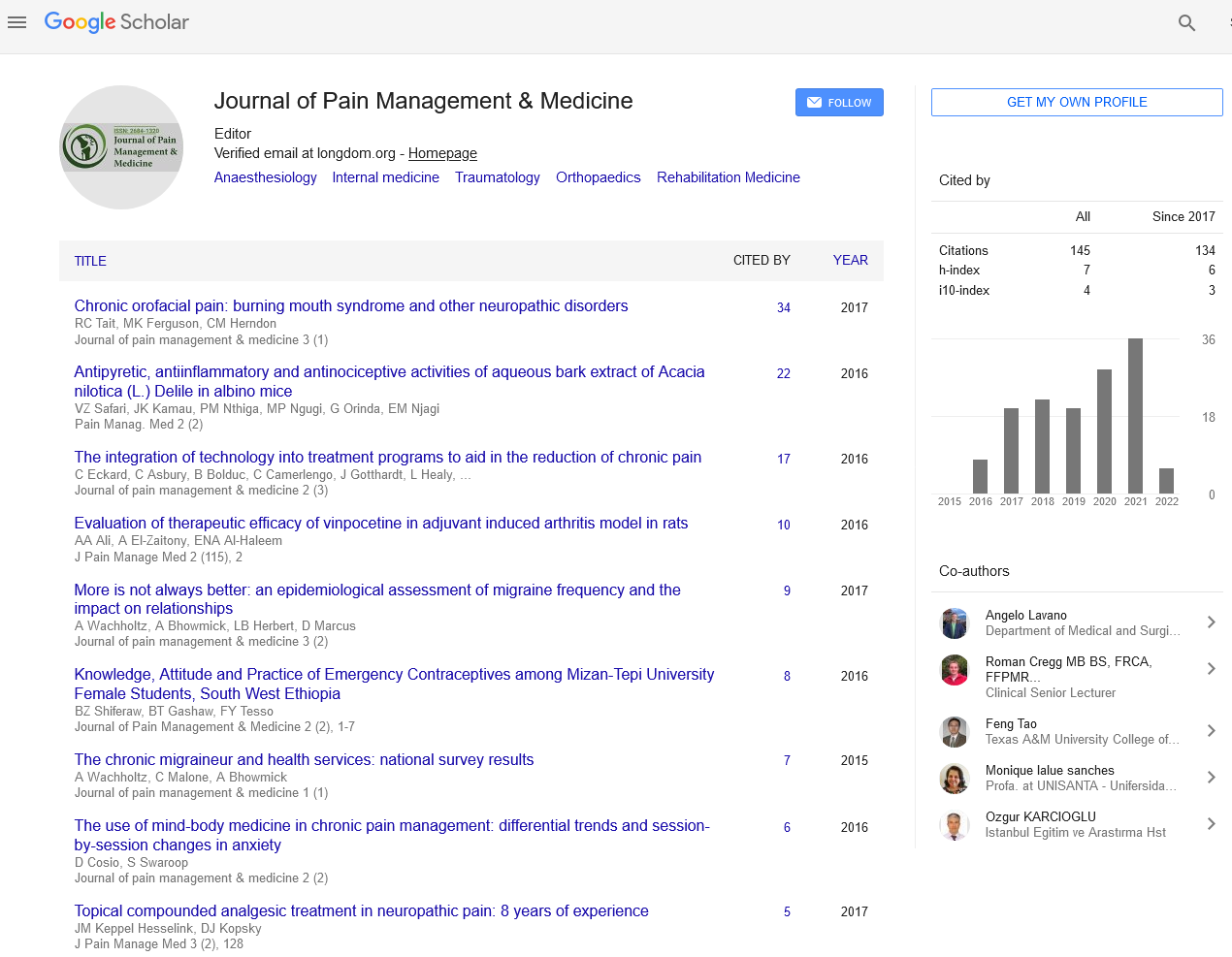Indexed In
- RefSeek
- Hamdard University
- EBSCO A-Z
- Publons
- Euro Pub
- Google Scholar
- Quality Open Access Market
Useful Links
Share This Page
Journal Flyer

Open Access Journals
- Agri and Aquaculture
- Biochemistry
- Bioinformatics & Systems Biology
- Business & Management
- Chemistry
- Clinical Sciences
- Engineering
- Food & Nutrition
- General Science
- Genetics & Molecular Biology
- Immunology & Microbiology
- Medical Sciences
- Neuroscience & Psychology
- Nursing & Health Care
- Pharmaceutical Sciences
Abstract
More is not Always Better: An Epidemiological Assessment of Migraine Frequency and the Impact on Relationships
Amy Wachholtz, Amrita Bhowmick, LB Herbert and Dawn Marcus
Objective: Chronic pain negatively impacts spouse/partner relationships, with greater impact associated with higher pain severity and co-morbid mood disturbance. This study investigated the role of pain episode frequency in migraineurs on relationship effects.
Methods: An online survey was conducted, collecting information about migraine, psychological distress, and relationship impact using standardized measures. Adults previously diagnosed with migraine were invited to participate through postings on migraine community websites and social media. Impact was evaluated based on four migraine frequency categories (migraines/month): less than weekly (0-3), one to two episodes weekly (4-9 and 10-15), and more than twice weekly (>15).
Results: A total of 1,399 adult migraineurs were included. Spouse/partner relationships had been mildly-moderately damaged for 30% with 0-3 migraine monthly, increasing to 40% with >15 migraine monthly. Migraine had contributed to a break-up for 4% with 0-3 migraines monthly, increasing to 8% for those with >15 migraines monthly. About 57% of participants reported satisfaction with their current spouse/partner, with satisfaction unaffected by migraine frequency among those who were satisfied with their partners. Negative impact on relationships with children and close friends also increased with migraine frequency. Depression and anxiety were significantly correlated with migraine frequency (P<0.001) and modulated relationship impact.
Conclusion: As migraine frequency increased, negative impact on relationships also increased. Interestingly, satisfaction with current spouse/partner was high for all migraine frequency categories. Clinically, this suggests that frequent migraineurs may benefit from a referral to couples counseling with a therapist that specializes in medically ill.


